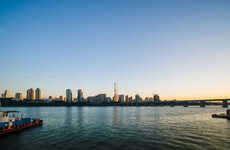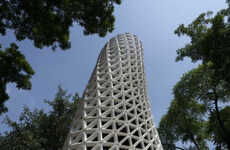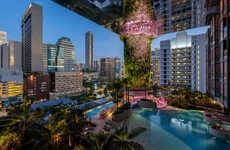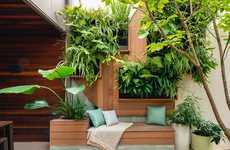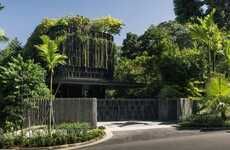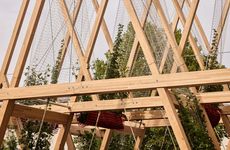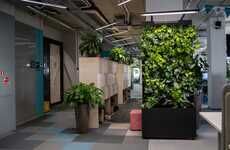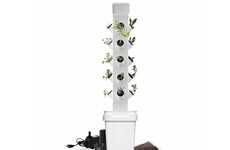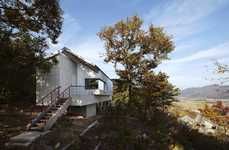
The Hawthorn Tower is Set to Be Holland's First Vertical Garden
Ellen Smith — July 10, 2017 — Eco
References: carbontrack.au & stefanoboeriarchitetti.net
The Hawthorn Tower was conceptualized as Holland's first vertical garden that will also serve as a space-conserving method of pollution control.
The architects were tasked with maintaining an inclination to environmental responsibility while also combating vastly increasing population concerns, which the Hawthorn Tower addresses. This tower is set be be infused with greenery and vegetation, and is estimated to absorb 5.4 tons of carbon dioxide -- the equivalent to one hectare of woods. The structure will host over 30 different vegetal species, imitating the ecosystem of a real, lush forest.
The Hawthorn Tower serves as an example of the potential collaboration and cohabitation between the natural and artificial world, enhancing the aesthetics of the city, while contributing to a cleaner, more sustainable future.
The architects were tasked with maintaining an inclination to environmental responsibility while also combating vastly increasing population concerns, which the Hawthorn Tower addresses. This tower is set be be infused with greenery and vegetation, and is estimated to absorb 5.4 tons of carbon dioxide -- the equivalent to one hectare of woods. The structure will host over 30 different vegetal species, imitating the ecosystem of a real, lush forest.
The Hawthorn Tower serves as an example of the potential collaboration and cohabitation between the natural and artificial world, enhancing the aesthetics of the city, while contributing to a cleaner, more sustainable future.
Trend Themes
1. Vertical Urban Forests - An opportunity for architects, designers, and eco-entrepreneurs to innovate green cityscapes and infuse nature in urban spaces.
2. Eco-architecture - A trend for architects and developers to prioritize environmental responsibility and sustainability in their designs.
3. Green Infrastructure - A trend for city planners and urban designers to incorporate green spaces, such as vertical gardens, to enhance the environmental and aesthetic quality of the built environment.
Industry Implications
1. Real Estate - Opportunities for real estate developers to create ecologically sustainable and aesthetically pleasing buildings.
2. Architecture - Opportunities for architects to innovate with eco-architecture and design greener, more sustainable structures.
3. Urban Planning - Opportunities for urban planners to incorporate green infrastructure into city development plans to enhance aesthetics, environmental quality, and improve quality of life.
3.6
Score
Popularity
Activity
Freshness


